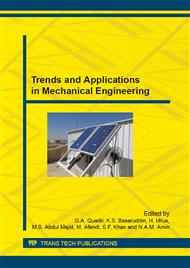p.188
p.193
p.199
p.205
p.210
p.215
p.220
p.226
p.232
Numerical Investigation on the Effect of Injection Pressure on Melt Front Pressure and Velocity Drop
Abstract:
Computational Fluid Dynamic (CFD) was used to simulate the injection molding process of a tray. The study focuses on pressure distribution and velocity drop during the injection process. CFD simulation software ANSYS FLUENT 14 was utilized in this study. The melt front pressure in the mold cavity shows that it was affected by the shape of mold cavity and filling stage. The melt front pressure will decrease as the flow move further than the sprue but it will increase rapidly when the mold was about to be fully filled. The slight pressure drop was detected when the molten flow meets the rib of the tray. The velocity of higher injection pressure was greater than the lower injection pressure but the velocity rapidly dropped when the melt front fully filled the cavity. The current predicted flow profile was validated by the experimental results, which demonstrates the excellent capability of the simulation tool in solving injection-molding problems.
Info:
Periodical:
Pages:
210-214
Citation:
Online since:
August 2015
Keywords:
Price:
Сopyright:
© 2015 Trans Tech Publications Ltd. All Rights Reserved
Share:
Citation:


